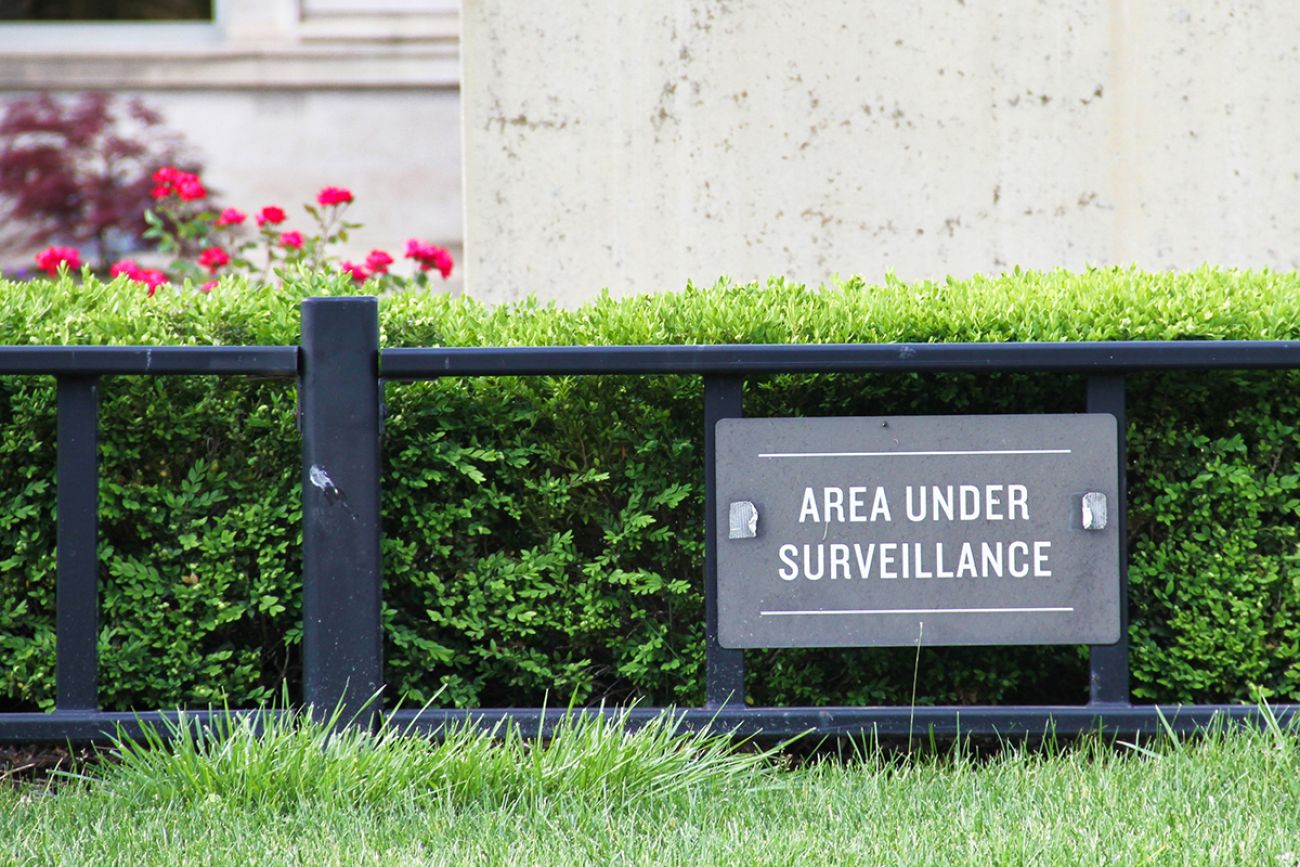Facial recognition technology under fire after false arrest of Detroit mother

Detroit Police Chief James White says embarrassingly poor police work, not facial recognition technology, is to blame for the false arrest of a pregnant woman whose temporary imprisonment led to a federal lawsuit and changes in the department’s investigative procedures.
The lawsuit has sparked national interest in Detroit’s use of the controversial technology. It’s the third lawsuit filed alleging the technology led to the false arrest of a Detroit resident. Facial recognition is an automated process to find possible matches for a suspect’s photo from a database of images pulled from mugshots, surveillance cameras and social media.
Porcha Woodruff, 32, is suing the city and a police detective, alleging discriminatory facial recognition technology violated her constitutional rights. Woodruff was eight months pregnant and preparing her children for school when she was arrested and imprisoned for 11 hours during a February robbery and carjacking investigation, allegedly causing her physical injuries.
White said the mistake is “absolutely inexcusable” during a Thursday presentation to the Board of Police Commissioners, but advocated for the continued use of facial recognition technology. White said it helped police identify and arrest 16 murder suspects this year. White also announced policy changes to prevent facial recognition photos from being included in photo lineups used to identify suspects.
Related:
- Old Detroit train site on track for national Underground Railroad network
- In Detroit, foul odors at Stellantis plant stoke fears of neighborhood ruin
- Detroit leaders mobilize gun violence response as shootings rise
“This was human error, this wasn’t the facial recognition system,” White said.
White, a former member of the Michigan Civil Rights Commission, said he wasn’t aware of the situation until Woodruff filed the lawsuit in U.S.District Court last week. The chief said he apologized to Woodruff and her family, including the infant son she was carrying when arrested.
“(Woodruff) is devastated, as you can imagine, and the investigator is devastated,” White said. “The fact of the matter is a lot of things transpired to get us here. She shouldn’t be in that position. She’s innocent. We’ve got a lot of work to do with restoring how she feels about police.”
Critics of the technology, like Commissioner Willie Burton, say it discriminates against Black Detroiters because the software can’t accurately differentiate between Black faces. Burton said the tool has proven to enforce racial profiling in Detroit.
“This is the third incident in the city of Detroit, America’s blackest and poorest city, where three individuals were misidentified by the technology,” Burton said. “Robert Wiliams, Michael Oliver, and now you have a sister by the name of Porcha Woodruff, who was eight months pregnant. This technology appears to be techno-racism. It’s the new Jim Crow.”
The ACLU of Michigan called on DPD to end its use of facial recognition technology, arguing in a statement that the department is aware of the flaws. The ACLU is representing Williams in a lawsuit he filed in 2021 after being falsely arrested. Of six cases where people were falsely accused of a crime due to facial recognition technology, half are from Detroit and all are Black people.
Several residents voiced objections to the technology during Thursday’s BOPC meeting. Minister Eric Blount, a fixture at the board’s weekly meetings, said facial recognition the police chief “must get out of town.”
“This is systemic and it’s got to stop,” Blount said.
Brenda Butler, a Detroit resident who addressed the board, said the consequences of being falsely arrested can be severe, even if that person is released and charges are dropped.
“What happens to me and my neighbors when we are falsely arrested, whether it’s under facial recognition or (not)?” Butler said. “If you put me in jail and I lose my job, who pays my salary for that false arrest? Who pays for my attorney to get me out on bond?”
White defended the technology, saying it has brought comfort to victims of crimes that police solved thanks to facial recognition tools.
“I would argue this is a valuable tool to be used appropriately,” White said.
An internal affairs investigation was launched into Officer LaShauntia Oliver. White said he directed internal affairs to review all instances where a photo lineup including an facial recognition match was used as the basis for an arrest warrant.
“The detective should have done a better job, and that’s a difficult declaration to make publicly, but it’s the right one,” White said.
White issued immediate policy directives this week that will be reviewed within 30 days by the Board of Police Commissioners, a civilian oversight body. Commissioners will decide whether to make the changes permanent.
Under White’s special order, photos of suspects will now be presented to witnesses one at a time, instead of in a group of six. Supervisors are required to determine there is an independent basis for believing the suspect committed a crime before including their photo in a lineup, and officers involved in the investigation can’t present photos to witnesses.
Department policy states facial recognition technology can only be used in connection to violent crimes, and shouldn’t form the basis for an arrest. DPD members are also prohibited from using facial recognition to assess immigration status.
DPD data shows facial recognition technology generated 34 possible matches for crimes so far this year. Police tried to identify suspects using 28 photos taken from security cameras, 27 photos from the city’s Project Greenlight surveillance cameras, 15 photos from social media and nine photos from undefined sources.
The department did not respond to a request for comment this week on how photos end up in the facial recognition database.
Commissioner Linda Bernard said the department needs to provide the board with more detailed reports on facial recognition searches. White said her suggestions were reasonable and adjustments can be made.
“This is a hot-button issue, it’s an issue that deserves more attention than it’s getting from us and more attention from the department in terms of your reporting,” Bernard said. “As you pointed out, facial recognition is here to stay … The only question is, how can we improve our oversight and help the department be more accountable.”
Commissioner Willie Bell defended the department’s use of facial recognition.
“The reality is, sometimes we have shoddy police work,” Bell said. “I have a great deal of confidence that we will rectify that, but some things just fall through the cracks and people make mistakes.”
White described the January 29 incident which led to Woodruff’s arrest. He said a man was carjacked by a woman he picked up in his car and another man who robbed him at gunpoint. The victim tracked his phone to a BP gas station on 7 Mile Road, where police collected a still image of the woman from a surveillance camera.
Police tried to identify the woman in the photo using facial recognition technology, which produced a field of 73 possible suspects that was narrowed down by officers. White emphasized that a human selected a photo of Woodruff, which was provided by an algorithm from the larger group of photos.
Woodruff’s photo was reviewed by investigators and then placed into a lineup with five other images. The victim identified Woodruff as the woman who helped steal his car and an arrest warrant was issued for Woodruff.
White said facial recognition technology identifies people who closely resemble the suspect, but police should have investigated further. White said police would have ruled Woodruff out because she was pregnant if the investigation was handled properly.
“In this instance, you had an eight-month pregnant suspect – intellectual curiosity should have led you down the path of wondering if the suspect was pregnant, and that didn’t occur,” White said.
Woodruff’s lawsuit states police arrested a man who was driving the victim’s car but did not show him a photo of Woodruff. The photo came from a mugshot taken when Woodruff was arrested eight years ago for driving with a suspended license.
The lawsuit states Woodruff had to stand or sit on a concrete bench while she was detained because no beds or chairs were available. The lawsuit states she was diagnosed with gestational diabetes from her pregnancy, which left her unable to consume food or drinks offered while in detention.
Woodruff’s husband took her to the hospital, the lawsuit states, where medical examiners reported she was dehydrated and having stress contractions.
See what new members are saying about why they donated to Bridge Michigan:
- “In order for this information to be accurate and unbiased it must be underwritten by its readers, not by special interests.” - Larry S.
- “Not many other media sources report on the topics Bridge does.” - Susan B.
- “Your journalism is outstanding and rare these days.” - Mark S.
If you want to ensure the future of nonpartisan, nonprofit Michigan journalism, please become a member today. You, too, will be asked why you donated and maybe we'll feature your quote next time!




